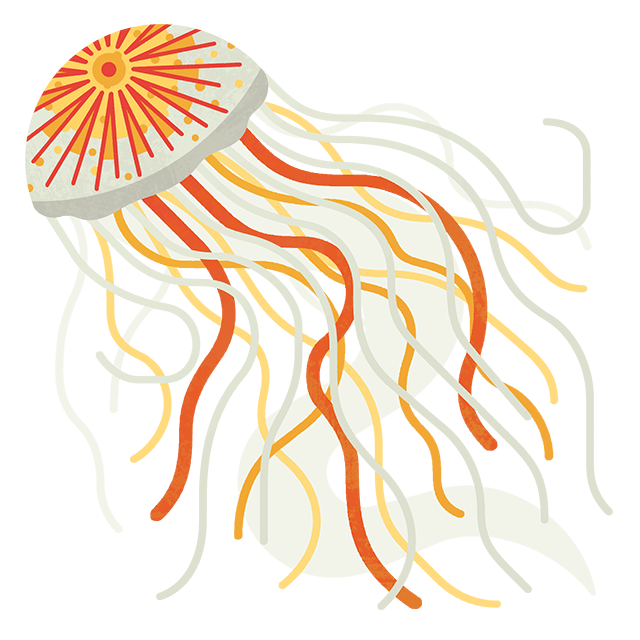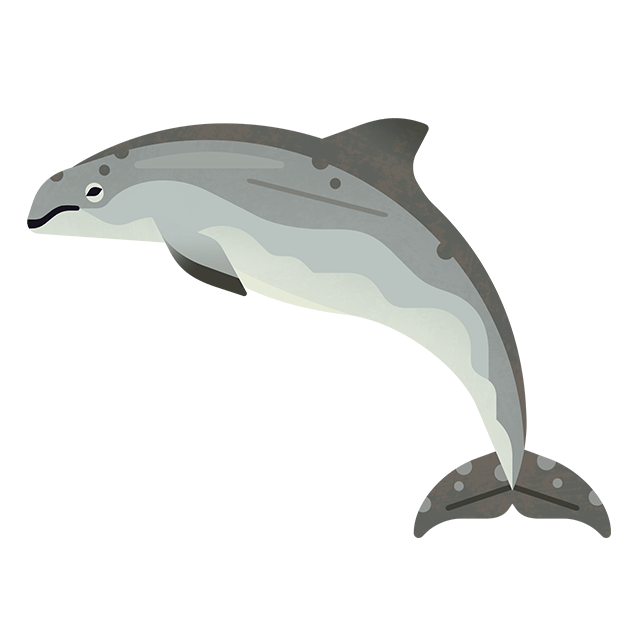
Spotted a jellyfish or marine turtle? We want to know!
It's the height of summer, peak jellyfish season, and time to keep your eyes peeled for spectacular leatherback turtles. If you're lucky enough to spot these exotic marine tourists in UK waters, we want to hear all about it.
As millions of people head to the coast for a hard-earned summer staycation, we're excited to have all those extra pairs of eyes looking out for marine wildlife.
The warmer months, from spring to autumn, see jellyfish blooms throughout the UK, and every year turtles – such as leatherbacks – migrate from tropical climes to feed on their favourite snack.
Rising sea temperatures and jellyfish swarms mean turtles are spending more time around the coast of Britain. By gathering data on sightings, we can learn more about what this means for these amazing sea creatures.
Jellyfish to look out for
Spend enough time at the coast and you're bound to come across jellyfish – we've had dozens of reported sightings over the last few weeks.
While these awesome animals might send some people running for the hills, there's no need to panic. Of the six jellyfish and two hydrozoan species found in UK waters, most of them are harmless to humans.
One or two species do have a painful sting though, so we'd urge you to avoid touching them – even if they're washed up on the beach.
The Marine Conservation Society is calling on beachgoers to report jellyfish sightings on the charity’s website as part of its national jellyfish survey. We've put together a jellyfish ID guide to help you, and why not test your knowledge with our brand-new Jellyfish Quiz.
If you have any jellyfish photos, we'd love to see them. Email them to us at info@mcsuk.org or tag us on social media with the hashtag #jellyfishsighting.
Gentle giant of the deep: the leatherback turtle
Weighing almost a tonne, with a shell up to 2m long, leatherbacks are the largest sea turtle on the planet and the most likely to venture into UK seas. Apart from their size, they can be recognised by their large flippers, small pink and white spots and black leathery shell (hence the name leatherback) with seven ridges running the length of the back.
Unlike most reptiles, these colossal creatures are warm-blooded and every year they undertake an enormous migration from the tropical breeding waters to the temperate feeding waters – a journey of over 7,000km.
Check out our Facebook, Twitter and Instagram channels to see some recent turtle sightings, and share your own photos with the hashtag #turtlesighting.

Credit: Mike Daines
Turtles in trouble
Marine turtles have been around for millions of years and play a vital role in balancing marine ecosystems. Over the last 200 years, human activities have had a detrimental effect on their survival with six out of seven species now threatened with extinction. Loss of habitat, plastic pollution, fishing bycatch, poaching and climate change are just some of the problems that turtles are facing.
Citizen science to the rescue
While humans are causing problems for turtles, we can also provide the conservation solutions – but we must be informed by data. That's where you come in.
Without your data we wouldn't be able to prove that there are problems at sea and our arguments wouldn't be backed by science. It's a key part of our work and you can be part of it!
See how citizen science has helped us bring about change and how you can get involved.













